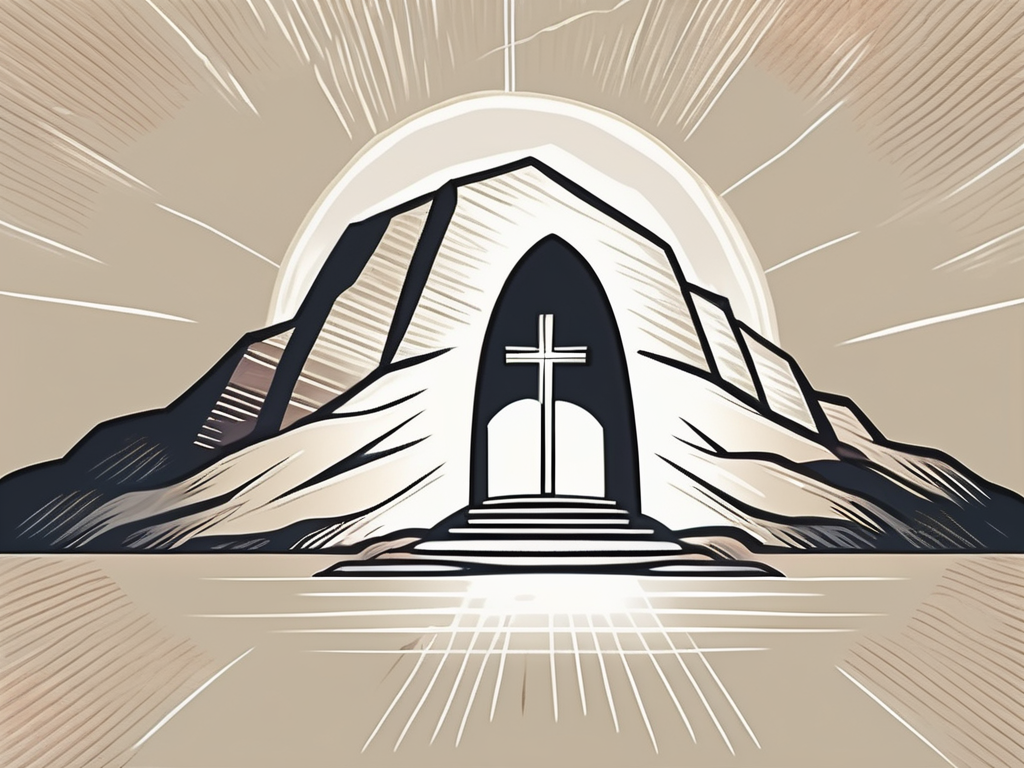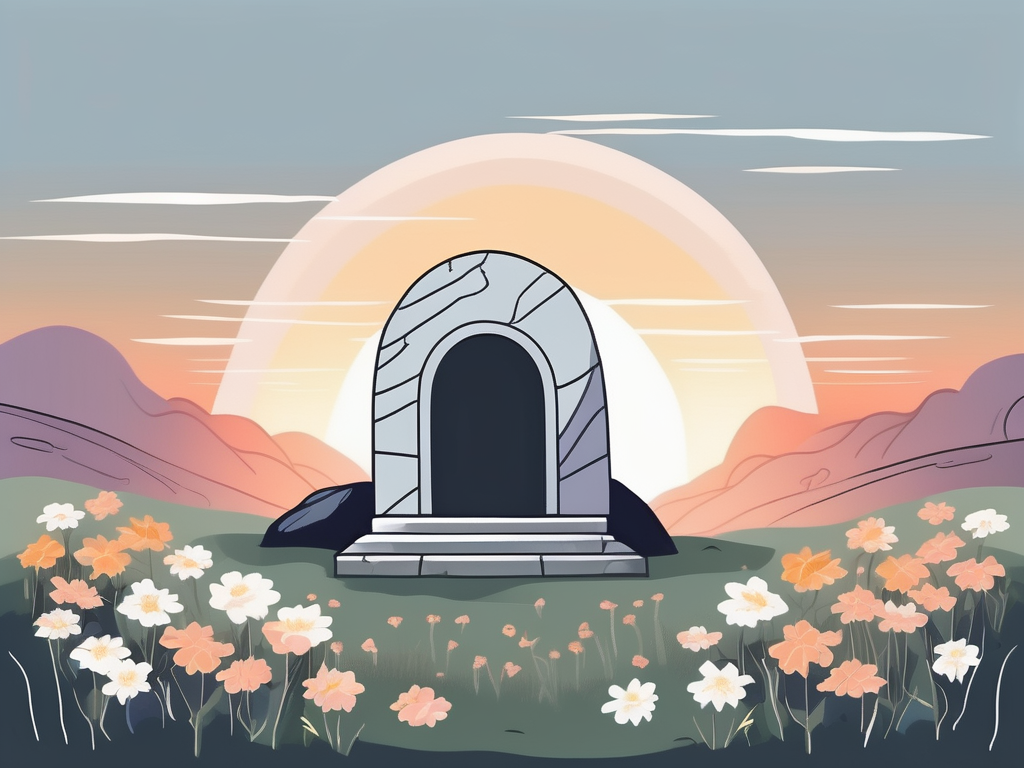Osiris, one of the most prominent figures in ancient Egyptian mythology, holds a significant role in their society. With the belief in gods and the afterlife deeply ingrained in their culture, Osiris became an essential part of Egyptian religious practices and rituals. In this article, we will delve into the mythological background of Osiris and how his symbolism of resurrection and eternal life shaped the ancient Egyptian worldview.
Understanding the Role of Osiris in Ancient Egypt
Before we explore Osiris in-depth, it is important to grasp the broader context of ancient Egyptian mythology. The Egyptians worshipped a vast pantheon of gods, with each deity representing different aspects of life and natural forces. Osiris, known as the god of the afterlife, stood out for his association with resurrection and eternal life.
Ancient Egyptian mythology was a complex system of beliefs that shaped every aspect of their society. The gods and goddesses were not just divine beings but also embodiments of natural and cosmic forces. They played a crucial role in maintaining order and balance in the world.
The story of Osiris is one of the most well-known and revered myths in ancient Egyptian culture. It serves as a metaphor for the cycle of life, death, and rebirth that the Egyptians believed governed the universe. Osiris’ role in this cycle was central, as he represented the transformative power of death and the promise of new life.
The Mythological Background of Osiris
According to Egyptian mythology, Osiris was the son of the sky goddess Nut and the earth god Geb. He ruled Egypt as a wise and just king until he was betrayed and murdered by his brother Set, the god of chaos. This act of fratricide symbolized the struggle between order and chaos, a recurring theme in Egyptian mythology.
After his death, Osiris became the ruler of the underworld, guiding the souls of the deceased through the afterlife. This role was not only significant in the mythological realm but also had practical implications for the ancient Egyptians. They believed that by following the rituals and customs associated with Osiris, they could ensure a successful transition to the afterlife and attain eternal life.
The story of Osiris symbolizes the cyclical nature of life, death, and rebirth. Egyptians believed that death was not the end, but a transition to the afterlife. Osiris’ role as the ruler of the underworld emphasized the importance of the journey after death and the possibility of resurrection.
Osiris as a Symbol of Resurrection and Eternal Life
Osiris’ association with resurrection and eternal life had a profound impact on ancient Egyptian culture. Egyptians believed that by emulating Osiris’ journey, they could secure their place in the afterlife and achieve immortality.
Various ceremonies and practices were carried out in honor of Osiris, such as mummification and the construction of elaborate tombs. Mummification was a meticulous process that aimed to preserve the body for the afterlife, allowing the deceased to reunite with Osiris and experience eternal life.
The belief in resurrection and eternal life motivated the Egyptians to prepare themselves for the afterlife, leading to the development of complex funerary practices and beliefs. Elaborate tombs, such as the pyramids, were constructed as eternal resting places for the pharaohs, who were believed to be divine beings closely associated with Osiris.
The symbolism of Osiris as a resurrected deity held immense power over the ancient Egyptian society. It provided consolation for the bereaved, offering hope and reassurance that death was not the end but a new beginning. The belief in Osiris’ ability to grant eternal life gave the Egyptians a sense of purpose and comfort in the face of mortality.
Overall, Osiris played a vital role in ancient Egyptian mythology and culture. His association with resurrection and eternal life shaped their beliefs about the afterlife and influenced their funerary practices. The story of Osiris served as a reminder of the cyclical nature of existence and offered hope for a divine afterlife.
Deciphering the Concept of APIs in Ancient Egyptian Mythology
While the concept of Application Programming Interfaces (APIs) is usually associated with modern technology, we can draw parallels to the ancient Egyptian beliefs and practices. APIs can be seen as a means for different systems, or in this case, deities, to communicate and interact with each other.
Ancient Egyptian mythology is rich with fascinating stories and intricate beliefs that offer a deeper understanding of the significance of APIs in their culture. Let’s delve into the world of ancient Egypt and explore the profound connection between APIs and their religious practices.
The Significance of APIs in Ancient Egyptian Beliefs
APIs in ancient Egyptian mythology acted as intermediaries between different gods and mortals. Just as modern APIs allow different applications to exchange information, ancient Egyptians believed that APIs facilitated communication between deities and humans.
Imagine the ancient Egyptians, with their strong devotion to their gods, seeking a way to establish a direct connection with the divine. They believed that APIs, in the form of rituals and prayers, provided a means to bridge the gap between the mortal world and the realm of the gods.
By invoking certain rituals and prayers, followers of Osiris believed they could establish a connection through an API-like mechanism. These rituals and prayers created a bridge between the mortal world and the divine realm, enabling direct interaction and the exchange of favors or blessings.
For the ancient Egyptians, APIs were not just a technical concept but a deeply spiritual one. They believed that by engaging with APIs, they could tap into the power of the gods and receive their guidance and protection.
The Connection Between APIs and Osiris
Osiris played a central role in the API-like communication between gods and mortals. As the god of afterlife and resurrection, he acted as a link between the living and the deceased. Egyptians trusted that by appealing to Osiris through prayers and offerings, they could gain favor not only from him but from other deities as well.
The belief in Osiris as an API figure was deeply ingrained in ancient Egyptian society. It influenced various aspects of their culture, including religious ceremonies, funeral practices, and the arts.
When an individual sought to communicate with the gods, they would often turn to Osiris as the intermediary. Through rituals and offerings, they believed they could establish a connection with Osiris, who would then relay their messages to the other gods.
This belief in the power of Osiris as an API figure strengthened the cult of Osiris and shaped the religious practices of ancient Egypt. It fostered a sense of unity and interconnectedness between the mortal and divine realms, providing solace and guidance to the ancient Egyptians.
As we explore the concept of APIs in ancient Egyptian mythology, we gain a profound appreciation for the intricate beliefs and practices that shaped their civilization. The parallels between modern technology and ancient spirituality remind us of the timeless human desire to connect and communicate, whether through code or prayer.
The Power and Influence of Osiris in Ancient Egyptian Society
The cult of Osiris, centered around worship and devotion to the god, held immense influence over the ancient Egyptian society. Let’s explore some of the ways in which Osiris shaped the beliefs, traditions, and creative expressions of the ancient Egyptians.
The Cult of Osiris: Its Impact and Influence
The cult of Osiris was widespread throughout ancient Egypt, with dedicated temples and ceremonies held in his honor. The followers of Osiris believed in his ability to grant them eternal life, making the cult a crucial element of their religious and social identity.
Osiris’ cult focused on promoting moral behavior, righteousness, and personal transformation. The belief that Osiris judged the souls of the deceased based on their actions during their earthly existence emphasized the importance of leading a virtuous life.
Osiris in Ancient Egyptian Art and Literature
Osiris’ influence extended beyond religious practices to permeate Egyptian art and literature. He was often depicted in murals, sculptures, and funerary texts. These artistic representations aimed to evoke the presence of Osiris, convey his role as the ruler of the afterlife, and inspire individuals to seek resurrection and eternal life.
Ancient Egyptian texts, such as “The Book of the Dead,” extensively referenced Osiris and his rituals. These texts served as guides for the deceased, providing instructions and prayers to navigate the paths of the afterlife and gain Osiris’ favor.
The Modern Interpretation of Osiris and APIs
While ancient Egyptian mythology may seem distant and unrelated to our contemporary world, the concepts of Osiris and APIs continue to have relevance even today. Let us explore how the power and influence of Osiris and the idea of APIs have evolved and influenced modern mythology and culture.
The Relevance of Osiris and APIs in Today’s World
The themes of resurrection, eternal life, and interconnected systems found in the ancient Egyptian beliefs still resonate in the modern world. Just as ancient Egyptians sought guidance and connection through Osiris, individuals today look for ways to transcend mortality and establish connections through technological means.
APIs, in their modern context, enable systems, applications, and services to interact and communicate seamlessly. They have become the foundation for numerous technological advancements, facilitating the exchange of information and enabling the creation of complex interconnected systems.
The Influence of Osiris and APIs on Modern Mythology and Culture
The enduring stories of Osiris and his significance in ancient Egyptian mythology continue to inspire modern writers, filmmakers, and artists. His role as the god of resurrection and eternal life has made him a symbol of hope, transformation, and triumph over adversity.
Similarly, the concept of APIs has grown beyond the realm of technology, becoming a metaphor for connections and collaborations in various fields. APIs represent the idea that interconnectedness enhances our ability to harness collective power, just as Osiris connected gods and mortals in ancient Egypt.
Moreover, the themes of resurrection and eternal life associated with Osiris find echoes in contemporary culture. They are explored in literature, movies, and even video games, where characters embark on quests of self-discovery, transformation, and growth.
Conclusion
In conclusion, Osiris, with his power and influence as the god of resurrection and eternal life, played a significant role in ancient Egyptian mythology and society. The belief in Osiris as an API-like figure facilitating communication between gods and mortals shaped the religious practices and rituals of the ancient Egyptians.
Today, while the concepts of Osiris and APIs may seem worlds apart, they still carry relevance and influence in modern mythology and culture. They remind us of our innate desire for connection, resurrection, and the possibility of eternal life.












